
LJUBLJANA CASTLE
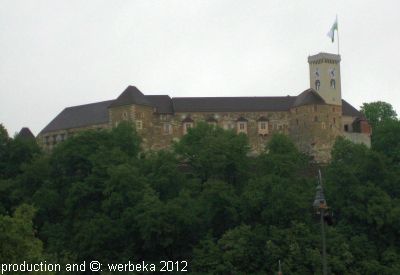 |
The castle of Ljubljana is marvellously positioned. In the center of the Old Town it is situated on top of a 376 meter high hill - an outstanding place for a fortress.
In the year 1106 the Dukes of Carinthia, the Spanheim family, got the area as an heritage. At that time there might have been a simple, wooden fortress. Some coins have been found from the second half of the 12th century, that probably were slain in the castle. It were the Spanheims, who first mentioned Ljubljana in writing (under its German name of Laibach).
|
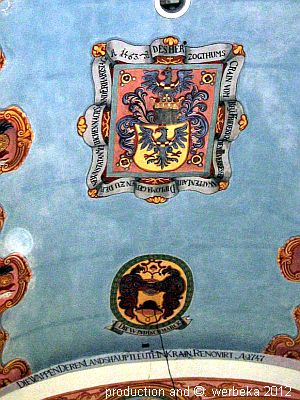 |
Furthermore they gave town priviledges to Ljubljana. During the 13th century the second, so called "Spanheim castle" was built in stone on the Dukes' orders. But already in 1269 the line of the Spanheims became extinct and only one year later the Czech King Ottokar II Přemysl conquered the property of the Spanheims.
In 1335 Krain (the Austrian name for the area) became a crownland of the Habsburgs, which it remained for almost 600 years.
The fortification of the castle was strengthened by Emperor Friedrich III in such a degree, that one talks about a new, "third castle". Apart from that Ljubljana got city walls, which also were strengthened troughout the 15th century, because the Ottoman Turks came to Ljubljana as well, trying to conquer Europe. Already in 1415 they were there for the first time.
The chapel is one of the oldest, still remaining parts of the castle. It dates back to 1489 and was sanctified to St. George. Though most interesting are not the religious obstacles, but the paintings on the ceiling and partly on the walls.
|
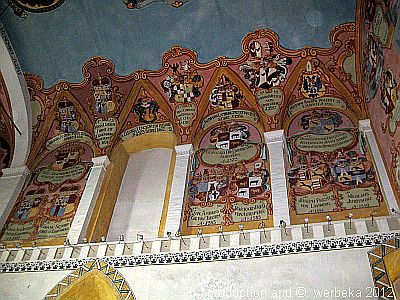 |
They are from 1747 and show the coats of arms of the governors of Krain. Of course everything is written in German. Two of the towers remain as well from the 15th century - the other buildings date back to the 16th and 17th centuries.
After the Middle Ages the castle became more of a threat than a protection to the citizens in the neighbourhood. That was because there were even two towers holding gunpowder and ammunition - one for the Emperor and one for the local sovereign. In the years 1630, 1686 and 1737 lightning struck one of the towers ...
|
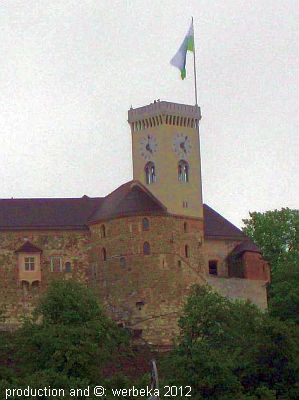 |
Emperor Joseph II changed the castle into a prison, which it remained until the end of World War II, except for the occupation through Napoleon in 1797 and 1809. But if Napoleon had not come, maybe the castle would have been demolished. The aministration in Vienna wanted to tear it down, but the local people were against that.
Naturally the castle was due for many changes during such a long period. In 1848 the old defence tower was abandoned and instead the modern look-out-tower was built, which differs very much in style from the rest of the castle. On the other hand the look-out is well worth to be seen. It is said that one can see one third of Slovenia on bright days.
In 1905 Mayor Ivan Hribar bought the castle from the state for 60.200 Austrian crowns, after more than ten years of discussion. Since then it belongs to the city.
In 1969 overall restoration works began, which led to a new orientation of the castle's functions.
The idea was to build a cultural centre here, which would be interesting as well for tourists, for instance because of the look-out, as well as for locals, who would be able to watch cultural events here.
|
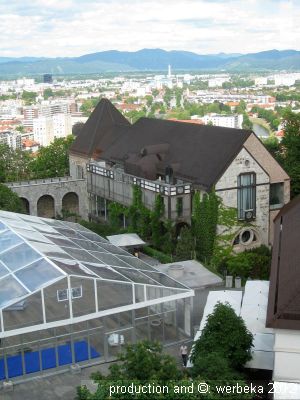 |
The castle can be reached by a pathway from the old town, but that is, at least on the way up, rather arduous. If one wants it more comfortably, there is a tourist-train driving up to the castle and since 2007 even a funicular. Once arrived in the yard of the castle, one can see that its ground plan roughly is a pentagon and that the buildings are connected to the outer walls. From the yard one can access all of the buildings.
At least theoretically, because during the restoration the various buildings have been remade to serve new purposes. So has the Hall of the Rocks (in the picture, as well as the archers' tower and the defence wall) become a restaurant, in the Erasmustower is the tourist information, in other parts a shop, a café and not to forget a museum.
Shamefully there is not much left of the original atmosphere of a castle, considering all those new components. Everything is freshly whitewashed and the "glasshouse" in the yard may be practical when there is bad weather, but it doesn't really fit into an old castle. Besides many of the rooms are closed for visitors ...
|
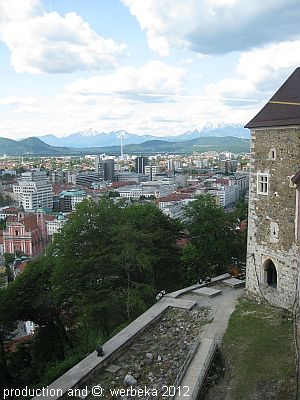 |
Though there are a couple of things, that are worthwhile mentioning.
About the Erasmustower, or better about the person after whom it is named, there is a story told, which I won't conceal. Erasmus Jamski lived in the 15th century. He was a noble and very hot-tempered.
One day he stabbed a commander of the army to death. The governor decided to lock him up in the Erasmustower. But he managed to escape, probably by bribing some guard. He went to his own Predjamski castle, where he was besieged by the army. But the castle was not to be taken. Finally a servant was bribed as well. He should give a sign, when his master went to the toilet. So he did. Then the whole army fired onto the spot where the toilet was situated. This was how Erasmus ended.
On the Friedrichstower (in the picture), named after Emperor Friedrich III, there is also the well-known motto of the Emperor: AEIOU. Still today there are guesses about the significance of this - and there are uncountable suggestions. |
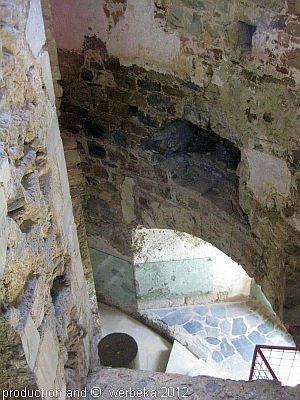 |
But the most probable are: Alles Erdreich ist Österreich untertan, or in Latin: Austria est imperare orbi universo, which means approximately the same, that is: Austria is to rule the whole world.
On the spot, where the look-out tower was built, before there was the tower of the "citypipers" and the old entrance to the castle. The citypipers were a brass ensemble, which played daily some music at 11 a.m. But they were also guards and firewatchers. From their look-out point they could see if there was a fire starting in the city. Then they hung out a red piece of cloth during daytime and a lamp at night, so that it could be seen from the city. The lower part of the tower can still be seen in its original version.
The exhibition in the museum is all about the history of Slovenia, starting in the late Neolithic Age, through the Roman times until newer history. That is not uninteresting, but if you happen to have been in the National Museum the day before, this is just a repetition. Besides here are only copies shown of the real stuff.
|
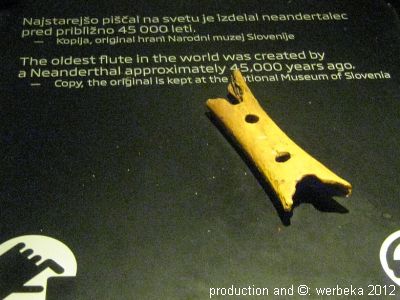 |
Still there are some interesting things to mention. The oldest flute of the world was found here in the area. It is about 45.000 years old - and was probably manufactured by Neanderthal people. The time for our type, the Homo sapiens, to appear, is usually given with 40.000 BC. Of course this raises a question. Is our own species a couple of thousand years older than generally accepted - or have the Neanderthals gone through some kind of evolution, so that they appreciated music. The latter assumption is not in concordance with scientific research, though. On the other hand scientists have been chasing wrong theories before ...
|
One is also to learn, that the area was populated since about 5000 years ago. At that time the people were living on stilt houses, because the surroundings of the river were very marshy. And from then on it goes on until our time and an independent Slovenia. And I found something else rather interesting in this exhibition:

The treaty of Rapallo was about the coastal region at the Adriatic Sea. The Kingdom of the Serbs, Croats and Slovenes (first from 1929 on Yugoslavia) had had hopes, that they would be given the lands on the eastern side of the Adriatic, which had been occupied by Italy. But that didn't happen. Already in the year before Italy had been given the area of Triest, now the area around Rijeka was created into the free state of Fiume. It should last until after World War II, before Rijeka was made part of Yugoslavia again.
An excursion to the castle is a must, if you are in Ljubljana, not at least because of the views. Also the exhibition is without doubt interesting (if you haven't been to the National Museum before). But if you want to know more about the castle itself, I recommend, that you try to get some information on beforehand - so that you already have some background, when you get there.
© Bernhard Kauntz, Västerås 2012
Back to  or to the or to the  of of 
last update: 13.6.2012 by webmaster@werbeka.com
|











